Volume 7 | Number 4 | November 2015
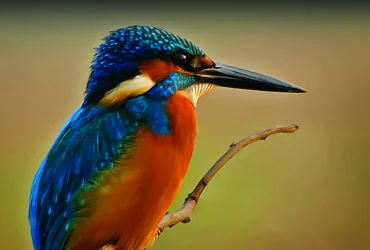 v7i4.198
v7i4.198ISSN: 1800-427X (print)
eISSN: 1800-427X (online)
DOI:10.47605/tapro.v7i4.198
Submitted date: 10 Sepetmber 2014
Accepted date: 12 February 2015
Published date: 15 August 2015
Pp. 250–252, Pls. 7–9.
The life cycle of Catochrysops panormus (Lycaenidae) in Sri Lanka
T.M.T.S. Priyadarshana* & G.V.I.H. Wijewardana
*Corresponding author. E-mail: tharakas.priyadarshana@gmail.com
The lycaenid butterfly, Catochrysops panormus Felder, 1860, is very rare and found in moist regions of Sri Lanka. Nevertheless, there are early records of the species from drier areas such as Haldummulla and Wellawaya. According to Woodhouse (1949) and d’Abrera (1998) the species has been recorded from ‘wet patches in the low-country dry zone’ in February and March, while it has also been recorded at high altitudes such as in Nuwara Eliya (~1900 m). The Sri Lankan population belongs to the nomino-typicale race. Nevertheless, very little is known about the natural history of C. panormus except for short species accounts in monographs on butterflies of Sri Lanka by Ormiston (1924), Woodhouse (1949) and d’Abrera (1998).
Section Editor: Jeffrey Miller
eISSN: 1800-427X (online)
DOI:10.47605/tapro.v7i4.198
Submitted date: 10 Sepetmber 2014
Accepted date: 12 February 2015
Published date: 15 August 2015
Pp. 250–252, Pls. 7–9.
The life cycle of Catochrysops panormus (Lycaenidae) in Sri Lanka
T.M.T.S. Priyadarshana* & G.V.I.H. Wijewardana
*Corresponding author. E-mail: tharakas.priyadarshana@gmail.com
The lycaenid butterfly, Catochrysops panormus Felder, 1860, is very rare and found in moist regions of Sri Lanka. Nevertheless, there are early records of the species from drier areas such as Haldummulla and Wellawaya. According to Woodhouse (1949) and d’Abrera (1998) the species has been recorded from ‘wet patches in the low-country dry zone’ in February and March, while it has also been recorded at high altitudes such as in Nuwara Eliya (~1900 m). The Sri Lankan population belongs to the nomino-typicale race. Nevertheless, very little is known about the natural history of C. panormus except for short species accounts in monographs on butterflies of Sri Lanka by Ormiston (1924), Woodhouse (1949) and d’Abrera (1998).
Section Editor: Jeffrey Miller
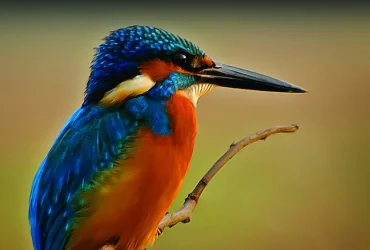 v7i4.197
v7i4.197ISSN: 1800-427X (print)
eISSN: 1800-427X (online)
DOI:10.47605/tapro.v7i4.197
Submitted date: 26 July 2014
Accepted date: 25 November 2015
Published date: 15 August 2015
Pp. 246–249.
Microhabitat use and activity budget of four Himalayan river-birds, India
M.C. Krishna, K. Sarma & A. Kumar*
*Corresponding author. E-mail: tpileatus@gmail.com
A wide variety of river-birds are found in the Eastern Himalayan region of Northeast India, but the literature on microhabitat use and resource use patterns of these river-birds is very sparse. The fundamental processes that determine niche structures and influence niche segregation in coexisting species is a basic concern of community ecology. For example, when territories of different species overlap, those species utilize different local resources or the same resources differently due to either niche complementarity or resource partitioning. Understanding the role of microhabitat has been an unending quest of avian autecology and community ecology. Such studies, particularly when understood in terms of resource partitioning, have been successful largely because of the fundamental importance of microhabitat to bird ecology. In the present study, we looked at the microhabitat preferences of four species of birds namely plumbeous water-redstart (Rhyacornis fuliginosa), white-capped water-redstart (Chaimarrornis leucocephalus), brown dipper (Cinclus pallasii) and slaty-backed forktail (Enicurus schistaceus) in Kamlang Wildlife Sanctuary (KWS).
Section Editor: Varadharajan Gokula
eISSN: 1800-427X (online)
DOI:10.47605/tapro.v7i4.197
Submitted date: 26 July 2014
Accepted date: 25 November 2015
Published date: 15 August 2015
Pp. 246–249.
Microhabitat use and activity budget of four Himalayan river-birds, India
M.C. Krishna, K. Sarma & A. Kumar*
*Corresponding author. E-mail: tpileatus@gmail.com
A wide variety of river-birds are found in the Eastern Himalayan region of Northeast India, but the literature on microhabitat use and resource use patterns of these river-birds is very sparse. The fundamental processes that determine niche structures and influence niche segregation in coexisting species is a basic concern of community ecology. For example, when territories of different species overlap, those species utilize different local resources or the same resources differently due to either niche complementarity or resource partitioning. Understanding the role of microhabitat has been an unending quest of avian autecology and community ecology. Such studies, particularly when understood in terms of resource partitioning, have been successful largely because of the fundamental importance of microhabitat to bird ecology. In the present study, we looked at the microhabitat preferences of four species of birds namely plumbeous water-redstart (Rhyacornis fuliginosa), white-capped water-redstart (Chaimarrornis leucocephalus), brown dipper (Cinclus pallasii) and slaty-backed forktail (Enicurus schistaceus) in Kamlang Wildlife Sanctuary (KWS).
Section Editor: Varadharajan Gokula
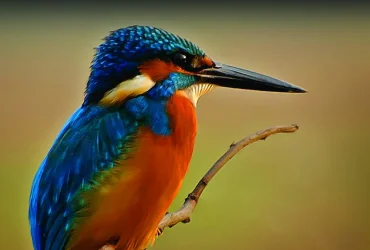 v7i4.196
v7i4.196ISSN: 1800-427X (print)
eISSN: 1800-427X (online)
DOI:10.47605/tapro.v7i4.196
Submitted date: 10 September 2014
Accepted date: 30 June 2015
Published date: 15 August 2015
Pp. 244–245.
Leptopilina rufipes (Hymenoptera) from India with a likely host record
C. Bijoy*, K. Rajmohana & M. Anjana
*Corresponding author. E-mail: bejoyaaryan@gmail.com
Leptopilina Förster, 1869 (Eucoilinae: Figitidae: Cynipoidea) are solitary larval-pupal parasitoids of drosophilid flies, mainly frugivorous species of the genus Drosophila Fallen 1823. The genus is cosmopolitan in distribution, with representations in all major biogeographic realms. Leptopilina species and their hosts are among the best studied host-parasitoid systems.
Section Editor: Mattias Forshage
eISSN: 1800-427X (online)
DOI:10.47605/tapro.v7i4.196
Submitted date: 10 September 2014
Accepted date: 30 June 2015
Published date: 15 August 2015
Pp. 244–245.
Leptopilina rufipes (Hymenoptera) from India with a likely host record
C. Bijoy*, K. Rajmohana & M. Anjana
*Corresponding author. E-mail: bejoyaaryan@gmail.com
Leptopilina Förster, 1869 (Eucoilinae: Figitidae: Cynipoidea) are solitary larval-pupal parasitoids of drosophilid flies, mainly frugivorous species of the genus Drosophila Fallen 1823. The genus is cosmopolitan in distribution, with representations in all major biogeographic realms. Leptopilina species and their hosts are among the best studied host-parasitoid systems.
Section Editor: Mattias Forshage
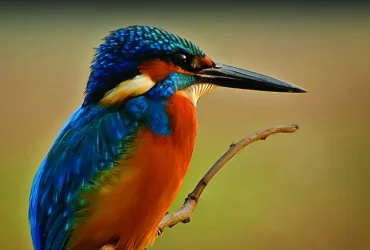 v7i4.195
v7i4.195ISSN: 1800-427X (print)
eISSN: 1800-427X (online)
DOI:10.47605/tapro.v7i4.195
Submitted date: 12 January 2015
Accepted date: 8 June 2015
Published date: 15 August 2015
Pp. 235–243, Pls. 5–6.
SPECIES DIVERSITY OF WETLAND BIRDS IN DRY ZONE SEASONAL RESERVOIRS IN SRI LANKA
Sujan M. Henkanaththegedara* & Upali S. Amarasinghe
*Corresponding author. E-mail: henkanaththegedarasm@longwood.edu
Abstract
The quantification of species diversity is essential in several aspects of ecology, including conservation biology, and as an indicator of the well-being of ecological systems. However, species diversity of the wetland birds in the seasonal reservoirs in the dry zone of Sri Lanka has received very little attention. In the present study, an attempt was made to determine the species diversity of wetland birds of 20 seasonal reservoirs in Anuradhapura and Monaragala Districts during both migratory and non-migratory seasons. A total of 46 species of aquatic birds belonging to 17 families (represent 7 orders) were recorded during the present study in selected seasonal reservoirs in the two districts. Overall, both bird species richness and abundance were higher in Anuradhapura district compared to Monaragala District. However, there were more bird species in both districts during migratory seasons. We have detected significant seasonal differences in species diversity estimated by both the Shannon-Wiener Index (F=3.926; P <0.1) and Simpson’s Index (F=3.718; P <0.1). This suggests that there was a significantly higher diversity of wetland birds during the migratory season. Species-area relationships suggested that the species richness of wetland birds associated with seasonal reservoirs would increase as the reservoir size increases. However, these relationships represented weak correlations (R2 range = 0.331–0.645). Overall our study indicates that seasonal reservoirs in Sri Lanka support a diverse community of wetland birds and provide a strong example for a case of enhancement of biological diversity through human activities by creating artificial habitats.
Key words : Anuradhapura, aquatic birds, avifaunal diversity, Monaragala, species-area relationship
Section Editor: Varadharajan Gokula
eISSN: 1800-427X (online)
DOI:10.47605/tapro.v7i4.195
Submitted date: 12 January 2015
Accepted date: 8 June 2015
Published date: 15 August 2015
Pp. 235–243, Pls. 5–6.
SPECIES DIVERSITY OF WETLAND BIRDS IN DRY ZONE SEASONAL RESERVOIRS IN SRI LANKA
Sujan M. Henkanaththegedara* & Upali S. Amarasinghe
*Corresponding author. E-mail: henkanaththegedarasm@longwood.edu
Abstract
The quantification of species diversity is essential in several aspects of ecology, including conservation biology, and as an indicator of the well-being of ecological systems. However, species diversity of the wetland birds in the seasonal reservoirs in the dry zone of Sri Lanka has received very little attention. In the present study, an attempt was made to determine the species diversity of wetland birds of 20 seasonal reservoirs in Anuradhapura and Monaragala Districts during both migratory and non-migratory seasons. A total of 46 species of aquatic birds belonging to 17 families (represent 7 orders) were recorded during the present study in selected seasonal reservoirs in the two districts. Overall, both bird species richness and abundance were higher in Anuradhapura district compared to Monaragala District. However, there were more bird species in both districts during migratory seasons. We have detected significant seasonal differences in species diversity estimated by both the Shannon-Wiener Index (F=3.926; P <0.1) and Simpson’s Index (F=3.718; P <0.1). This suggests that there was a significantly higher diversity of wetland birds during the migratory season. Species-area relationships suggested that the species richness of wetland birds associated with seasonal reservoirs would increase as the reservoir size increases. However, these relationships represented weak correlations (R2 range = 0.331–0.645). Overall our study indicates that seasonal reservoirs in Sri Lanka support a diverse community of wetland birds and provide a strong example for a case of enhancement of biological diversity through human activities by creating artificial habitats.
Key words : Anuradhapura, aquatic birds, avifaunal diversity, Monaragala, species-area relationship
Section Editor: Varadharajan Gokula
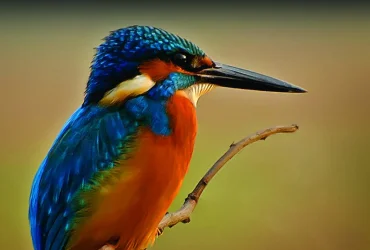 v7i4.194
v7i4.194ISSN: 1800-427X (print)
eISSN: 1800-427X (online)
DOI:10.47605/tapro.v7i4.194
Submitted date: 31 December 2014
Accepted date: 27 July 2015
Published date: 15 August 2015
Pp. 224–234.
AN INVERTEBRATE PERSPECTIVE TO HUTCHINSON’S RATIO USING CO-OCCURRING TIGER BEETLE (COLEOPTERA: CICINDELIDAE) ASSEMBLAGES
Chandima Deepani Dangalle* & Nirmalie Pallewatta
*Corresponding author. E-mail: cddangalle@gmail.com
Abstract
Tiger beetles co-occur for cryptic advantage, interspecific hybridization, reproductive synchrony and thermoregulation. Successful co-occurrence relies on the absence of competition and Hutchinson (1959) has proposed body size ratios for co-occurrence of bird and mammal taxa. The present study calculates body size ratios for co-occurring tiger beetle assemblages and investigates similarities with ratios for co-occurring birds and mammals. Ratios obtained using measurements of different morphological characters are considered and compared. Association of body size ratios of co-occurring tiger beetles with habitat type and number of species in co-occurring tiger beetle assemblage are determined. The study revealed a body weight ratio and body length ratio for co-occurring tiger beetles that was similar to Hutchinson’s ratios for birds and mammals. Different ratios were obtained when using different morphological parameters. Body size ratios inferred using mandible lengths differed significantly according to habitat type. Further, relatively higher values were observed for assemblages occupying terrestrial habitats while lower values were found for assemblages of aquatic habitats.
Key words : body size, competition, morphology, habitat type, Sri Lanka
Section Editor: Jörg Gebert
eISSN: 1800-427X (online)
DOI:10.47605/tapro.v7i4.194
Submitted date: 31 December 2014
Accepted date: 27 July 2015
Published date: 15 August 2015
Pp. 224–234.
AN INVERTEBRATE PERSPECTIVE TO HUTCHINSON’S RATIO USING CO-OCCURRING TIGER BEETLE (COLEOPTERA: CICINDELIDAE) ASSEMBLAGES
Chandima Deepani Dangalle* & Nirmalie Pallewatta
*Corresponding author. E-mail: cddangalle@gmail.com
Abstract
Tiger beetles co-occur for cryptic advantage, interspecific hybridization, reproductive synchrony and thermoregulation. Successful co-occurrence relies on the absence of competition and Hutchinson (1959) has proposed body size ratios for co-occurrence of bird and mammal taxa. The present study calculates body size ratios for co-occurring tiger beetle assemblages and investigates similarities with ratios for co-occurring birds and mammals. Ratios obtained using measurements of different morphological characters are considered and compared. Association of body size ratios of co-occurring tiger beetles with habitat type and number of species in co-occurring tiger beetle assemblage are determined. The study revealed a body weight ratio and body length ratio for co-occurring tiger beetles that was similar to Hutchinson’s ratios for birds and mammals. Different ratios were obtained when using different morphological parameters. Body size ratios inferred using mandible lengths differed significantly according to habitat type. Further, relatively higher values were observed for assemblages occupying terrestrial habitats while lower values were found for assemblages of aquatic habitats.
Key words : body size, competition, morphology, habitat type, Sri Lanka
Section Editor: Jörg Gebert
Hubungi Kami
The ultimate aim of the journal is to provide an effective medium for communication of the latest and best scientific information.
Copyright © 2020 Taprobanica. All Rights Reserved
Jasa Pembuatan Website by IKT




